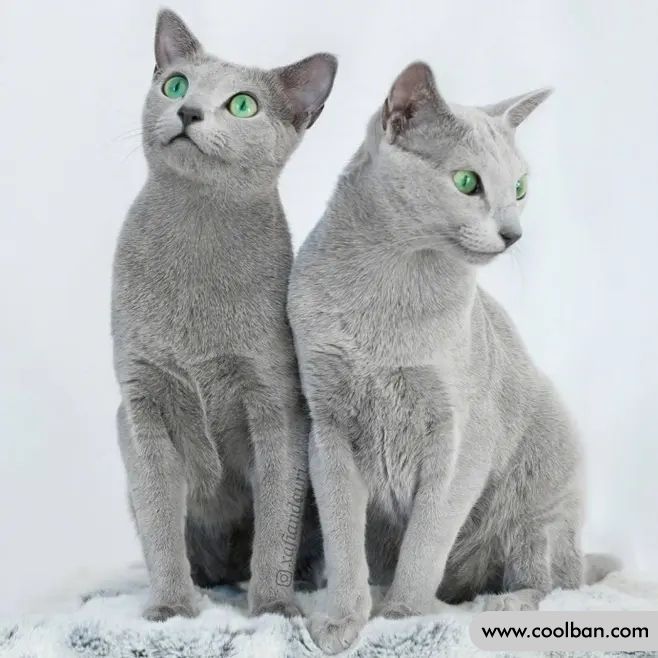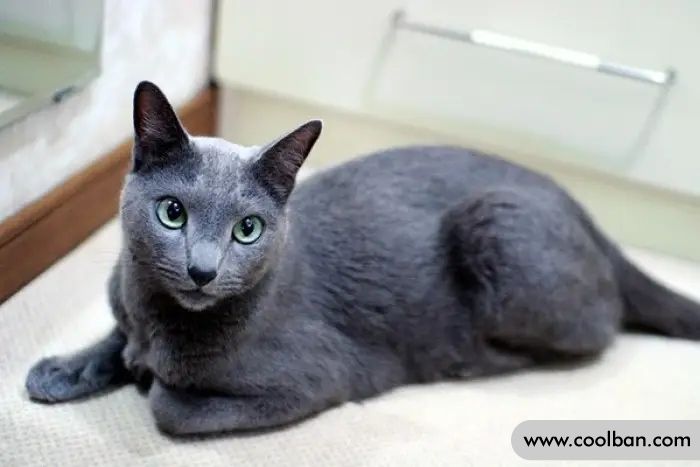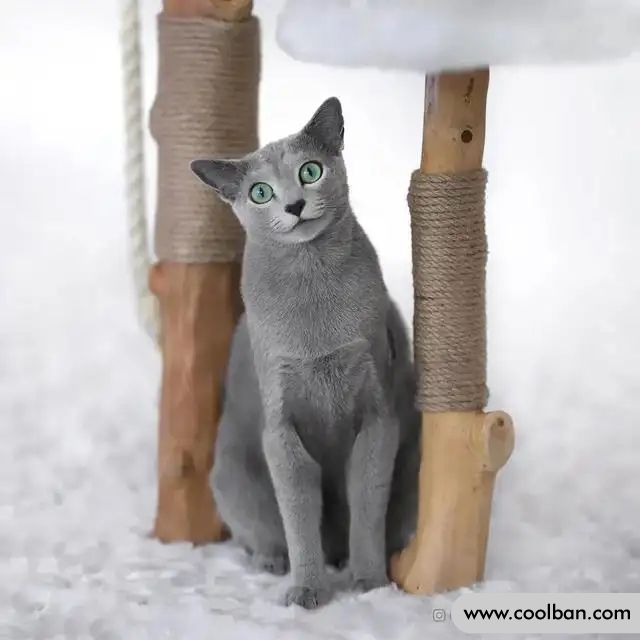Morphological characteristics of Russian blue cats
Russian blue cats are known as short-haired nobles and winter elves. Russian blue cats originated in the 19th century and were only found in Russia in the early days, but now they can be seen all over the world. There are very few Russian blue cats in the world. If you want to buy a Russian blue cat, prepare at least tens of thousands of dollars. If you see Russian blue cats in the market for thousands of dollars, these must be crossbreeds.
The ancestors of Russian blue cats originated in Siberia, so they are called winter elves. Originally, the ancestors of the Russian Blue were brought to England from Russia. To ensure their breed, some animal breeders use Siamese cats to cross with them. Therefore, Russian blue cats, like Siamese cats, also have some oriental flair. In addition, some breeders have created some transitional Russian blue breeds, but these transitional cat breeds are not considered Russian blues.

Russian blue cats are well-behaved and like to be quiet, so they are also loved by many cat lovers. But while they're quiet, they're also clingy and follow their owners pretty much wherever they go, so if you want your own space, then Russian blues aren't a good pet for you. If you don't mind having something small at your feet all the time, then the Russian blue cat must be your sweet companion.
Morphology of the Russian blue cat
Do Russian blue cats have their own characteristics besides their blue fur? The answer is of course yes, Russian blue cats are not a new breed of cats bred by breeders through crossbreeding of different cats, they come from Russia. In order to ensure the continuation of the Russian blue breed (the number of Russian blues decreased rapidly after World War II), early cat owners used Siamese cats to crossbreed, so when you see Russian blues, you can also feel the presence of a trace Oriental flavor.

Morphological description of the Russian blue cat:
Head Features: Short, straight wedge-shaped; flat skull and forehead; muzzle of medium length; straight bridge without nasal interruption; strong jaw.
Nose Features: Medium length.
Chin Features: Of medium height, the chin is vertical from the tip of the nose to the chin.
Paws: Small, slightly rounded, with five toes on each forelimb and four on the hind legs.
Physical Characteristics: Long, exotic, thin to medium sized frame; well muscled.
Limb characteristics: The legs are long and thin, and the claws are small and round, oval in shape.
Tail Characteristics: Long and straight, in proportion to the body, tapering from the base of medium thickness to a rounded tip.

Ear Features: Large, broad at the base, pointed forward, slightly rounded, thin and translucent skin, few inner hairs.
Eye Characteristics: Large, well spaced, almond shaped, slightly sloping. Color, bright green, the kitten's eyes range from yellow to green and don't set color until 1 year old.
Physical characteristics: slender and elegant, with a slight oriental flavor, strong bones, simple and gorgeous coat; short hair, with a velvety texture and feel, the inner layer of the down can resist the cold, with gray, blue-gray, looks like It has a silver-grey sheen like mink, hence the name Russian Blue.
Coat Characteristics: Short, dense and fine, plush, flared outward from the body, soft, silky to the touch, double coat, thick undercoat; same monochromatic bluish-gray, silver tips with silvery sheen caused by coloration ; acceptable kitten mole, in Disappears before age 1, and prolonged exposure to sunlight can cause darker coats; black and white variants developed in Europe and New Zealand are approved by the GCCF.
In most cases, many people identify cats only by their hair color, so many unscrupulous businesses use this to deceive consumers. If you want to buy an authentic Russian blue cat, in addition to judging from the morphological characteristics mentioned above, you can also ask the seller for the cat's pedigree certificate or birth certificate.
